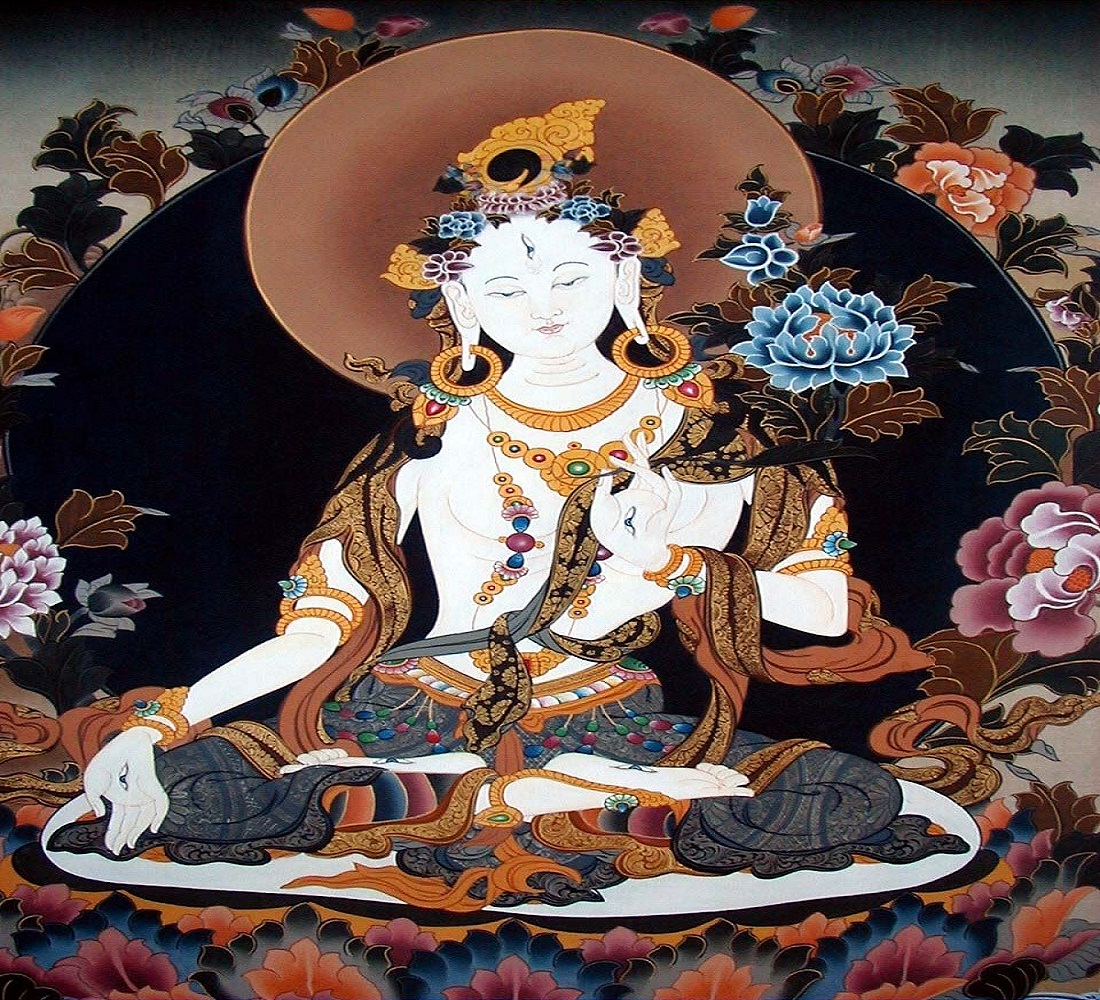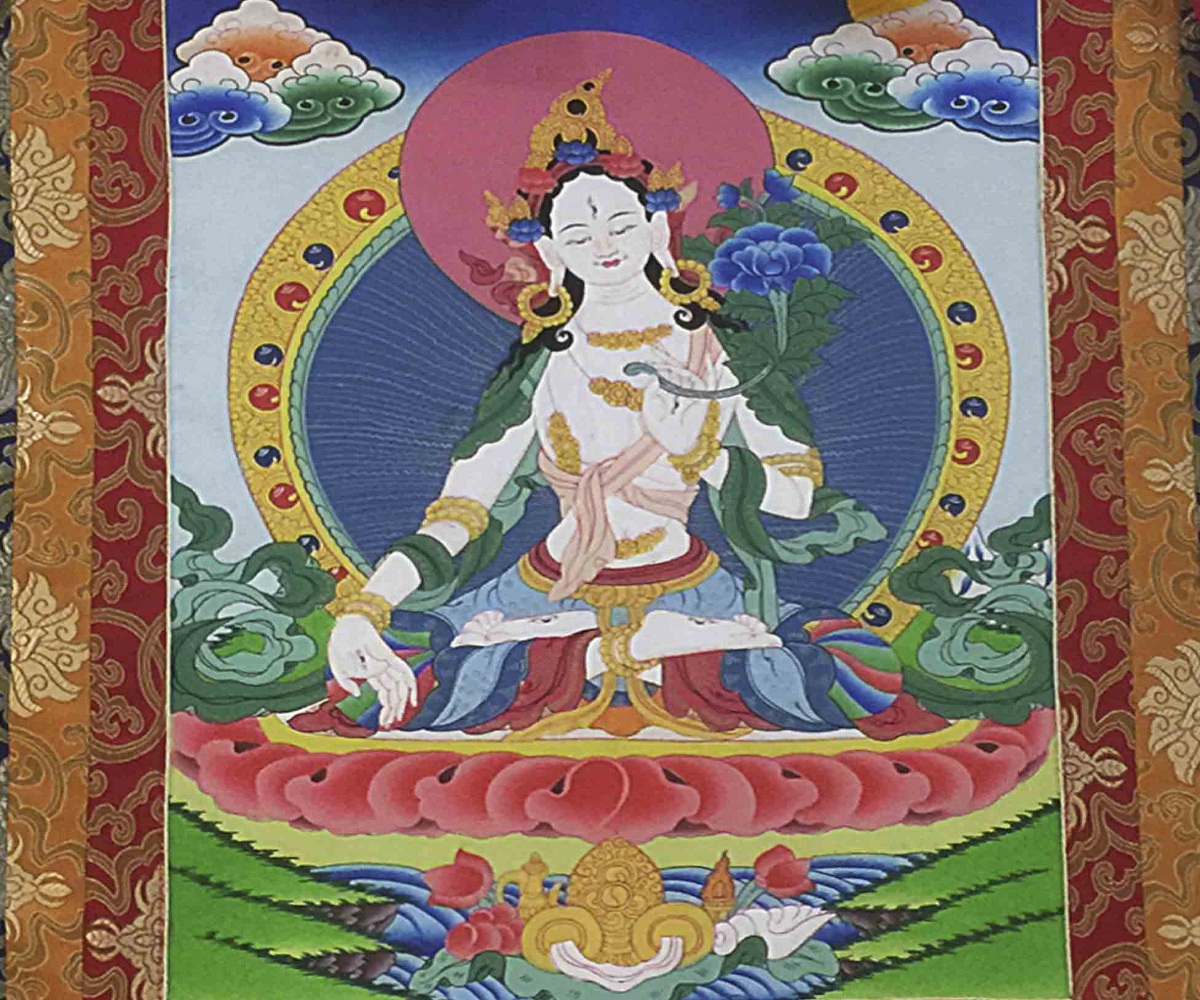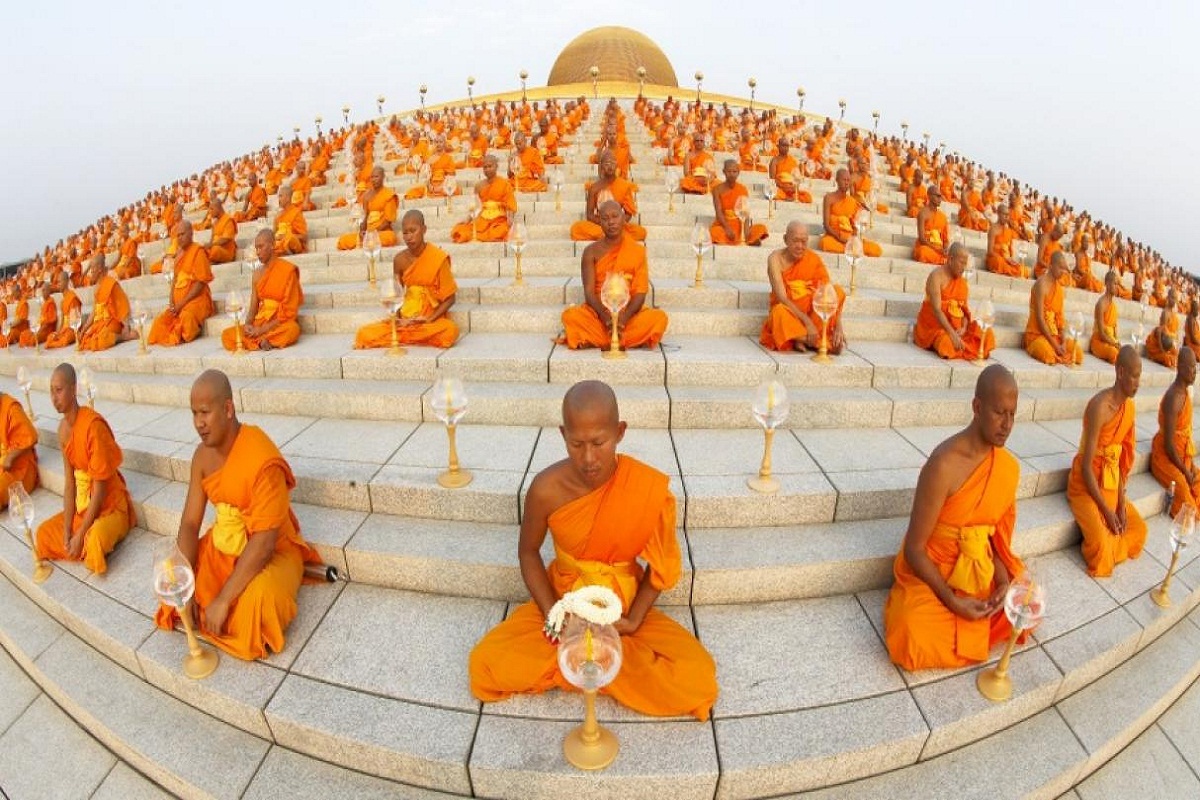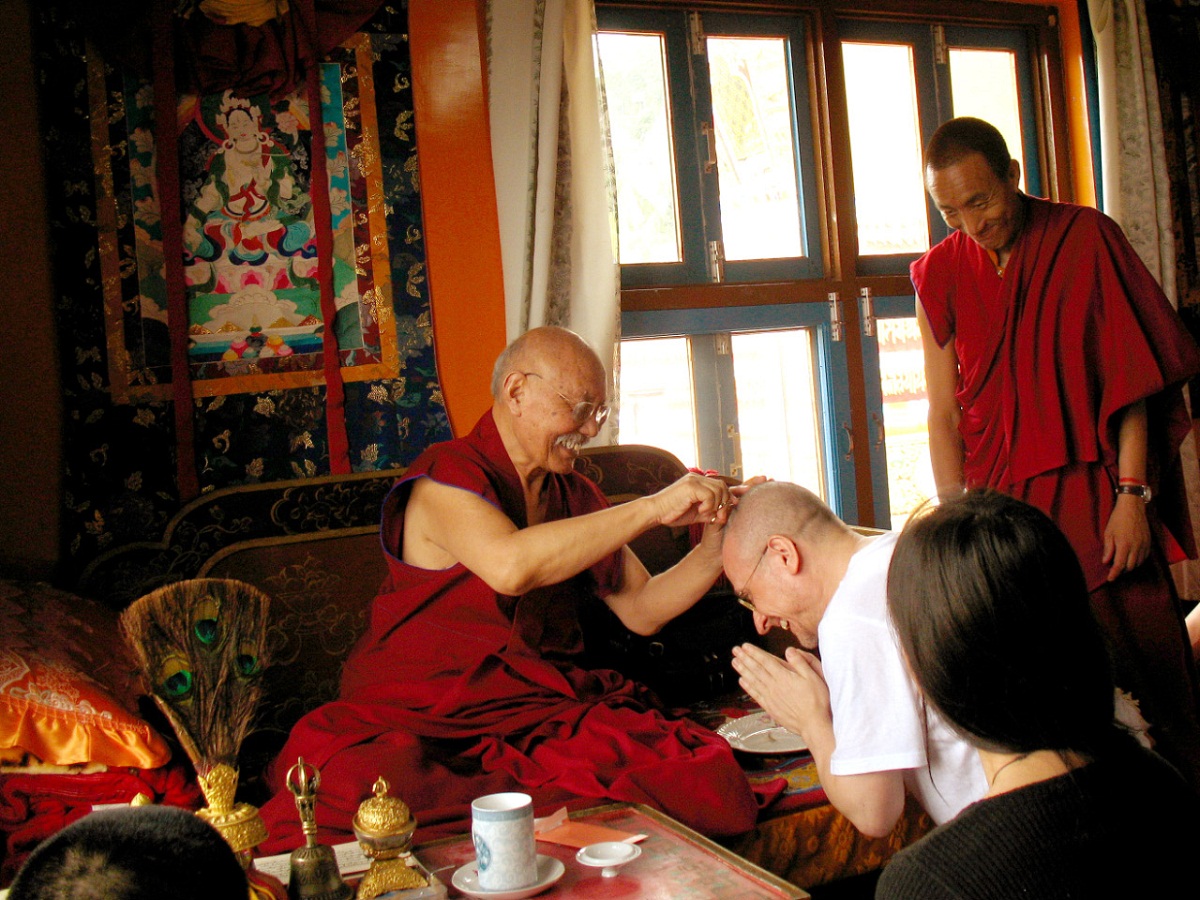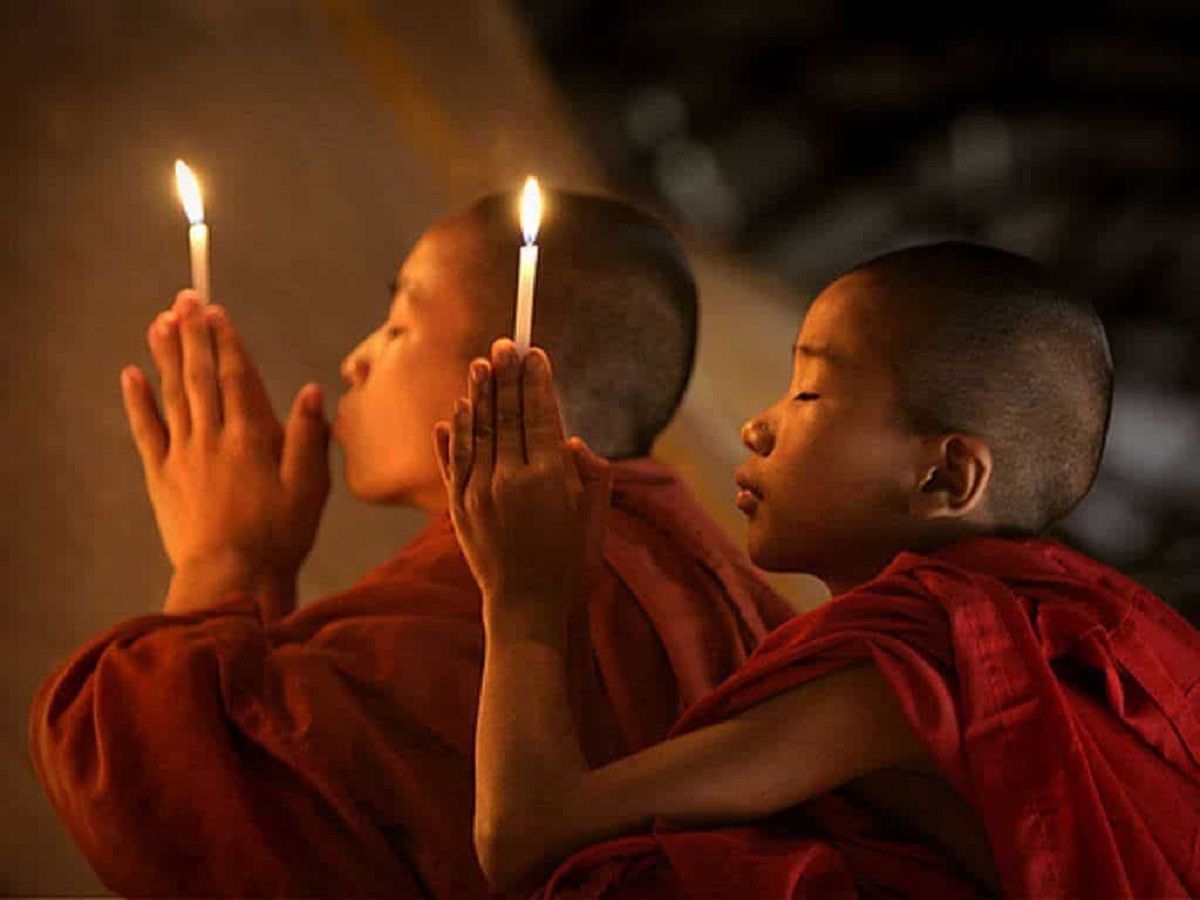In this article we bring you relevant information about the White Tara, a deity that represents femininity in Buddhist philosophy and by practicing it with great faith you will be able to reach great states of compassion and healing of the body and spirit. Keep reading this article and learn more about White Tara!

The White Tara
In Vajrayana Buddhist philosophy, there is a female deity known as the White Tara who is associated with Tantric Buddhism in the way that Buddhism has been preserved in Tibet. The White Tara is known as the mother of liberation and is represented as a virtue in work and deeds.
The deity of the White Tara is used in the Buddhist community and in the Vajrayana branch of Buddhism in order that the Buddhist practitioner or monk can develop his skills and inner qualities so that he can understand his environment.
The teachings of the White Tara are based on the understanding of compassion (Metta) and emptiness (Shuniata) Although in the branch of Zen Buddhism (Japanese) and in Shingon Buddhism the White Tara does not appear.
Although the White Tara has been defined as a generic name for a group of Buddhas or bodhisattvas that may have a similar appearance. Since the practitioners of Buddhism can understand that the White Tara of different aspects and qualities in the same way that the bodhisattvas are considered as the metaphor of a virtue that will follow the Buddhist philosophy.
The main mantra or sound for the White Tara is the well-known oṃ tāre tuttāre ture svāhā (in Sanskrit) or oṃ tāre tu tāre ture soha (in Pali) thus following the pronunciation in Tibetan Buddhist traditions.
Origin of the White Tara
For a long time the White Tara is a female deity revered by the Buddhist religion, this goddess of Buddhism is said to have been born from the tears of the Buddha of Compassion (Avalokiteshvara) But the White Tara comes from the philosophy of Hinduism along with other representations such as Sarasvati, Laksmi, Parvati and Sakti in the fifteenth century.
In another way, the White Tara is known as a deity of great importance in the ancient Pala Empire (it was an ancient state that ruled in Bengal) with the passage of time the White Tara deity entered the Buddhist pantheon as bodhisattvas.
Then with the appearance of Prajñaparamita-sutra (which are the Sutras of perfection) which is the Mahayana Buddhism known in India. A stage of the feminine begins in Buddhism that will be achieved when the Buddhist monk reaches a state that is called"the mother of perfect wisdom" in this way the White Tara is known as "the mother of all buddhas” as stipulated in many philosophical currents of Buddhism.
In India, the deity of the White Tara is represented as the eyes of wisdom, just as the void is a concrete thing that is used to contemplate, since its eyes look outwards showing the infinite compassion that it has and its sweet smile that made many practitioners of Buddhism look at her as an important deity.
That is why the White Tara, being a female goddess in Buddhism, became highly appreciated and important as a figure of veneration and in the XNUMXth century she was integrated into the practice of tantra. In the Buddhist movement that took place in Tibet from that time to the present, the White Tara remains a very important female deity of Buddhism in Tibet and Mongolia.
Another reason White Tara is so popular in Buddhist philosophy is that many lay Buddhist practitioners can invoke it without having to seek out a monk or lama to intercede for them.
In this way, as the White Tara was accepted as a Buddhist bodhisattvas since she was accepted by the common people as a divinity that could be implored in daily life since she is an entrance of compassion and mercy since she is a way for the path in the personal evolution of people within the Buddhist philosophy.
The main ways
There are various forms that are attributed to the divinities in Buddhism and the White Tara is no exception since different spiritual criteria have been attached to it in the meditations that are done in its name, among the most important the following stand out:
- Syamatara, (dark savior) is known as the Green Tara, is considered a divinity or Buddha that is dedicated to the activity of the enlightened and to overcome the different obstacles that arise in life and during meditation is one of the most valued by practitioners of Buddhism along with the White Tara.
- sitatārā (white savior) is known by practitioners of Buddhism as the White Tara and is going to be the representation of compassion, as well as having a long life full of serenity and healing, it is also said that she wears the chinta-chakra ( the wish-fulfilling wheel).
- Kurukulla: Known as red Tārā, she is considered a female Buddhist deity that is centered within Vajrayāna Buddhism, she also has a function of being a deity of meditations, she is invoked to attract love and also to subdue enemies. .
- Yellow Tara: is a deity of Buddhism who is invoked to have prosperity and wealth in all aspects.
- Ekajati or better known as the Blue Tara: this deity is used to transmute the anger that is carried within into peace and a better life for the practitioner.
- The black tare: the practitioners of Buddhism associate this deity with power in all aspects that seden.
- Chintámani Tara: it is a form of Tara that is used in the Gelug school in Tibetan Buddhism and is practiced at a very high level such as Tantra Yoga and sometimes tends to confuse it with the green tara.
- Khadiravaṇi-Tārā (Tara of the acacia forest) was a deity who appeared to him in the Nāgārjuna jungle in southern India and many Buddhist monks and practitioners of Buddhist philosophy have come to refer to her as the 22nd Tara.
With regard to Buddhist schools, 21 Taras have been recognized and there is a practice text entitled "In praise of the 21 Taras” that four schools of Tibetan Buddhism recite it every morning in order to keep a happy day harmonious.
Meaning of the White Tara
In Buddhist philosophy, the White Tara has been considered as a practice that has healing purposes, it is a divinity that symbolizes a long life in Buddhist philosophy, although it is not required to be a Buddhist practitioner to be able to perform a ceremony to the White Tara. Tara White. Since the meaning of the word Tara in Sanskrit means "Freedom" which has been represented as an expression of spiritual amplitude for all people who follow Buddhist philosophy.
Although it is said that Tara was a woman who lived many years ago in India and stood out for being a beautiful princess who wanted to practice Buddhist philosophy and everything related to this religion of India.
The story told of the White Tara was that she went to a Buddhist monastery for the purpose of becoming a practicing Buddhist. But the monks seeing this beautiful woman were very surprised by what she requested. The monks told her to go away from her to her house and take care of her family affairs and her children.
At that time, the approach that Buddhist monks had was that only men could be enlightened by Buddha and achieve the path to liberation of the body.
Tara Blanca, very annoyed by the response given by the Buddhist monks, dedicated herself to responding with the following words "There is no one in the world who can limit a man and a woman to being enlightened, and to prove it I am going to dedicate myself to Buddhism."
After that situation that White Tara experienced, she went home and began to meditate for a long time, many claim that she spent more than twelve years meditating. In that long period of meditation, the White Tara became an enlightened one and thus a Buddhist priestess.
Becoming a priestess of the Buddhist philosophy, she decided to return to the Buddhist monastery, where the monks had the information that she had become very popular. They asked the white tare to lead them on the path of enlightenment.
In this way, the White Tara represents a special energy in Buddhist philosophy, since she has the tools to overcome fear, anguish, worry and stress. That is why it is said that each person has or carries within a tare, that is why we must find a way to find it.
White Tara as savior
The White Tara embodies many of the principles and qualities of feminism, which is why this deity in Buddhist philosophy is known as the Mother of Compassion and Mercy. In the Buddhist philosophy she is the source with the appearance of a very beautiful woman, she gives birth to cordiality, compassion and can alleviate evil in people who wish to invoke her through her ceremonies.
She has the grace to beget, nurture and can smile at vitality and creation. The White Tara has the sympathy of a true mother towards her children. When she joins the Green Tara she has the ability to offer protection and succor to all the people who may suffer some unfortunate circumstance in the world.
One virtue that White Tara possesses is that it can offer healing to people who are injured or who are physically and psychologically damaged. Together with the Red Tara, it teaches the practitioners of Buddhism about being aware and not discriminating against the phenomena that have been created and being able to transform desire into compassion and love.
When the White Tara is joined with the Blue Tara, it becomes a strong protection in the Nyingma lineage, in this way it comes to express its wrathful and fierce feminine energy. That when invoked she destroys all the obstacles that are put in her way and will be able to engender good luck and promote the path towards spiritual liberation.
Spiritual Practices
In the spiritual practices that are carried out with the White Tara, it can be long or short, since many of these spiritual practices include some prayers or a tribute is made to her in order to invoke the presence of the White Tara and make several prayers for her to take the shelter.
After this, her mantra is sung to her and practitioners must visualize her either in the form of a light or in her natural form after this happens. The mantra and the visualization of it must be dissolved.
Then all the merits that have been obtained must be dedicated to him so that the practice that was carried out had joy in all the beings present, at the end of the ceremony some prayers can be made to obtain long life for the Lama who was the one who gave rise to this practice.
In the practice of the sadhanas of Tara, they are considered in Buddhist philosophy as the first practices and when a visualization of the deity occurs, the true teachings of Buddhist philosophy are being invoked. In cases where the creation phase of the Tara occurs together with the Yidam, practitioners of Buddhism have come to affirm that they visualize the White Tara so realistically that it is a phenomenon created by the mind.
By performing these practices together with meditation and performing the visualization together with the mantra in front of the practitioner or on top of him, a set of energies is formed on wisdom and compassion.
With the constant spiritual practice of this White Tara, the practitioner tends to share these qualities and becomes enlightened with his being and all that he represents. But all this is represented as a visualization of the practitioner who is joining all these qualities, while its emptiness becomes Yidam, which means a deity of meditation.
This situation always occurs when the meditation practice is already ending. The practitioner feels himself dissolve along with the White Tara deity form he visualized and realize that what is considered to be the "I" is only a creation of the mind and is non-existent and inherent to long term.
This practice prepares the practitioners of the philosophy of Buddhism so that they may be able to face the dissolution of oneself when in the process of his death and through meditation the Buddhist monk can approach emptiness. This is that he can get closer to the truth and make an unfolding of the void towards the path of light.
That is why when the practitioner recites the mantra he invokes the energy that exists in the White Tara through the sound of the seed that is purified and at the same time the psychic states of the body are activated (they are the chakras).
This will untie the knots of psychic energy that the practitioner of Buddhism has that prevented him from developing a body (vasra), this means a diamond body. Which is very necessary so that the practitioner through the meditations can progress to more advanced practices and deeper states of meditation.
When the spiritual practices are being carried out, the monks must perform a simple white Tara sadhana, but they are carried out by making a series of invisible events, both external and internal, thus giving rise to a work that is called the divine Yoga (of the Dalai Dama), these works explore all the branches of the Yidam and the tantric practices.
The results that are obtained by performing all these spiritual practices of the White Tara. One of them is that it tends to reduce the forces of illusion that can turn into negative karma. Such as illness, klesha afflictions ('pains') and other obstacles and darkness.
The mantra that is applied with faith and devotion helps to generate a buddhic mindset (bodhi chita). In the heart of the practitioner it must be pure in all the psychic channels, since the body will allow a very natural expression of compassion and generosity that will flow from within the heart.
When the practitioner has experienced the white tara in a perfect way, he becomes aware that his form is perfect, that is to say that the intrinsic nature of Buddha which is enclosed by the darkness and the inclination that the practitioner has in the dualistic phenomena that are true and permanent.
“Tara is the impeccable expression of the inseparability of emptiness, awareness and compassion. Just as we look into a mirror to see our face, meditation on Tara is a means of seeing the true face of our mind free from any trace of illusion."
White Tara Mantra Initiation
To be able to initiate the practice of the White Tara, the practitioner of the Buddhist philosophy through a special connection with many aspects of the Buddha's mind. The feeling that the practitioner must have to be able to start the practice of White Tara must be very similar to people who are very positivists who are kind and wise.
By having all these qualities, the practitioner will be able to make a special connection and will be able to increase his way of loving others and therefore appreciate life more and obtain spiritual liberation. Since he will have the knowledge of all the spiritual surroundings of him.
That is why practitioners decide to take the White Tara as an initiation process to Buddhism, since it is the first approach to Buddhist philosophy by entering and feeling the presence of Buddha. Well, it will be felt in the person's habitual breathing and in the movement of the air.
This is going to be the connection between the spiritual and material beings and when the practitioner is beginning to receive these energies, they will obtain improvements in the way they look at the planet and the practitioner's mind begins to fill with peace and self-confidence.
This will be the beginning of blessings for the practitioner of Buddhism who, through the practice of White Tara meditation, will begin to perform visualizations and will have many spiritual teachings, feeling the great Buddha as an inner guide. But all the faithful who start in this practice must learn the techniques of self-control and practice applied meditation daily to be able to disconnect from material things.
All these processes that the practitioner of Buddhism must go through are supervised by a Buddhist teacher who has many years of spiritual experience.
In this way, no person is forced or induced to carry out the initiation of the white tare mantra. But all the faithful must be guided spiritually in order to know the path to spiritual liberation and healing of the body.
With this, the practitioner of Buddhism will be able to find benefits that will allow him to enjoy a healthy mind and be able to receive spiritual, emotional and spiritual benefits.
When the practitioner begins to receive the initiation of the White Tara mantra, he begins to create a bridge of connection between karma and white tara. But he must blindly trust his faith and his mind since the main idea is to create an energy that will allow him to protect himself from diseases and evils that can arise in society. A widely used prayer for the beginner practitioner is the following:
“Noble Tara, I beseech you, both you and your retinue,
that you remember with love your promise of the past
and release my fears and those of all beings.
Dispels the dark mentality in the face of adversity.
May harmonious circumstances flourish
and grant us the ordinary and supreme siddhis ['mental powers'].
“om tare tu tare ture sojá”
initiation levels
In order for the practitioner of Buddhist philosophy to be initiated into the art of the White Tara mantra, they must go through certain levels, the first level known as the familiarization of compassion. At this level, the practitioner must prepare his mind in a strong spiritual way, which will allow us to heal our body from various diseases.
The second level that the practitioner must pass is to be able to carry out the internalization of the spiritual process that must be within our mind. In the practice of meditation he must use the energy that his body has for healing purposes.
In this way, that energy should be used primarily to heal our mind and our spirit, all this will fall on the power of Buddha that will be able to enter our mind through the white tare.
In conclusion, about the types of levels that the practitioner will obtain in his initiation process, he will have a set of weapons to be able to start the processes and prevent the evils and different diseases that can be found.
Featured Information
In other religions unlike Buddhism, the White Tara is not considered as a virgin and is not considered as a God.
To which offerings or masses must be paid, since the White Tara can be found within us. That is why the duty of the practitioner of Buddhism is to find the white tare in us. After having found it, we must use its power for our own benefit.
That is why each aspect of life is related to a tare, especially the white tare that will represent spiritual medicine for our body and soul.
In this way we must purify ourselves by purifying our body and our soul in the presence of the Tara, it does not matter if you are a woman or a man since the only requirement that is asked of you is to belong to planet Earth.
This will allow you to establish the most appropriate conditions to be able to manage your condition based on the knowledge that you have achieved during the meditative practice.
If you have found this article about the White Tara important, I invite you to visit the following articles:

